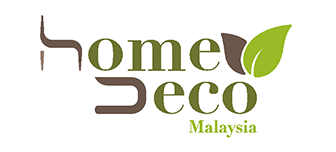Antique mirrors add character and elegance to a room. However, you need to know what you are purchasing otherwise you could be duped into spending far more than the mirror is worth.
Framed antique mirrors are a rare find and besides their classical beauty often have a rich and interesting history.
A short history of mirrors
By the 1st century AD, almost every known glass-making technique had been mastered, except for clarity. However, mirrors at the time were murky because of their unstable backing and concave design. The image they reflected was as if we see our reflections in a pool of water, not well at all.
Thanks to the Venetians, who spent years mastering the art of creating crystal glass, the first mirrors, as we know them today, appeared around 1510. Besides the glass, a suitable backing had also been created that could be spread thinly and evenly to reflect a spotless image that was not discolored.
As the carefully guarded secrets of the Venetians slowly spread across Europe some beautiful creations of Bohemian, German, French and English mirrors were created.
Top indications of a truly antique mirror

These are the things that you need to look out for in order to ascertain that a mirror is a genuine antique and not a reproduction:
Mirror size

It wasn’t until the late 18th and early 19th century that glassmaking techniques allowed for larger glass panes to be made. Therefore, if the vintage mirror was made in the 1800s, its size will never exceed 2 feet.
Condition and aging of the frame

Any signs of aging on the wood frame and gilding of the mirror are a good sign that it is an antique. Look for the following:
- Discoloration of the gilded finish is a sign that the mirror is an antique. It was common practice to re-gild items in the 18th and 19th centuries and re-gilding is If the gilding of the frame is still original, it adds substantially to the value of the mirror, between 30 and 50%.
- Uneven corners on the wooden frame are caused by the various temperature changes over the years.
- The mirror itself will have discolorations and spots. These are usually concentrated in the lower area.
- When you sniff the frame, it should not smell like wood that has been newly processed.
Glass quality

If the glass is perfectly flat then you are not looking at a vintage mirror. Older mirrors have noticeable bubbling or waviness since glass making techniques were only perfected in the very late 19th century.
Crystal-like reflections
During the 16th century, the backing of the glass was made from melding tin with a bit of mercury. When this was spread onto the glass, it would stick well but also result in a sparkly reflection. This sparkly or crystal-like reflection is an indicator that you are looking at an old mirror.
Other tell-tale signs to look out for

- Screws, glue, and staples are modern inventions and won’t be present on antique mirrors.
- Newer glass has a crisper edge because it is machine cut whereas older glass will have a more rounded edge.
- Old glass has a thickness of 3/16 of an inch and modern glass is 1/4-3/8” thick. You can test for thickness with a coin held to the surface of the mirror and measure the distance between the reflection and the coin. This measurement is the thickness of the plate. Old glass also sounds different when tapped with the coin. It will have a sharp tinny ring whereas modern glass sounds dull and muted because it is thicker.
- In modern frames, you will notice corners that are factory rounded, drilled holes and shapes that are perfectly symmetrical. The hand-crafted mirrors of old were not so perfectly symmetrical.
- Older screws were usually uneven and had single slot heads. However, there is the possibility that some screws may have been changed over time.
- Some mirrors may have other visible signs of their authenticity like trademarks, labels or a date indicating when the frame was manufactured.
What makes an antique mirror appear fake?

- If the mirror has been gilded a few times, it may make it impossible to tell if the mirror is a true antique.
- A picture frame that has been turned into a mirror is quite common and very rarely these have the original mirror.
- If the original glass has been replaced, the antique frame still maintains some of its value if the mirror is not too modern. The original glass can add up to 50% to its value.
- It is not advisable to re-silver mirror glass and collectors of antique mirrors should rather remove the glass and replace it, preferably with something not too modern looking.
- Beveling on older mirrors is usually irregular and soft-edged because it was done with a pumice stone by hand. If it is sharp, then you will know that the glass is replaced.
Final Say!
Bear in mind that it is very rare to find antique pieces that are in perfect condition. There is nearly always some evidences of repair or replacement in frame. If it is in perfect condition, all glossy like an item as delicate as a mirror is most probably a forgery or a modern piece.



